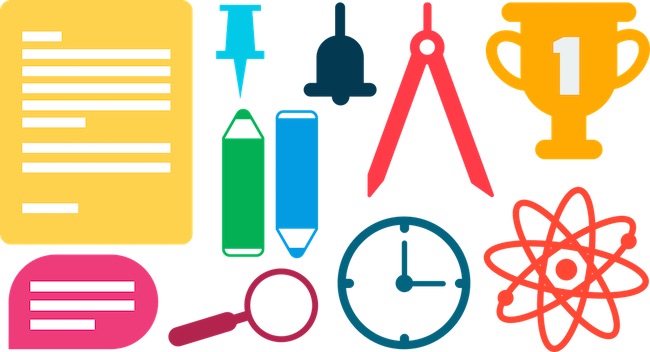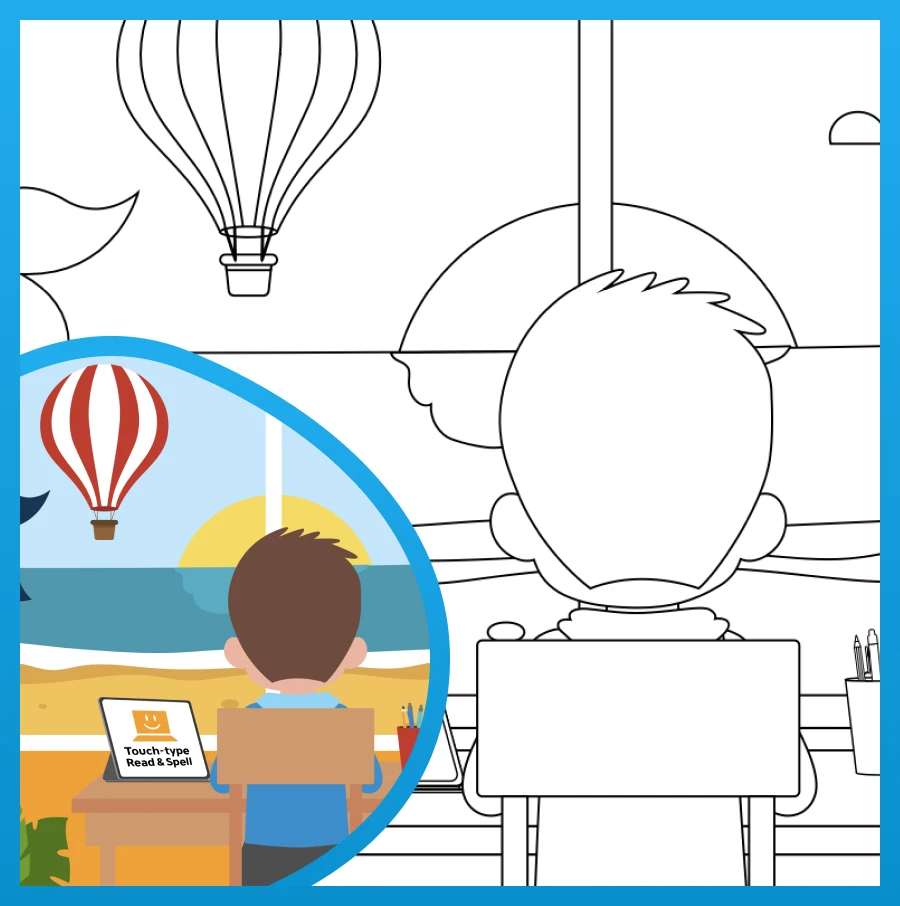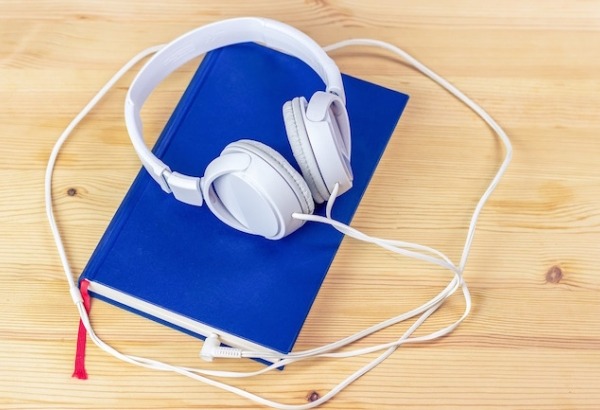Modifications for students with Down syndrome

Some learners with Down syndrome attend special schools where they are taught a specific curriculum and have lesson content and delivery adapted for their needs. Others may learn at home or as part of a co-op.
However, it’s increasingly common for children to enroll in their local education system where they can study alongside non-Down syndrome peers. There are a number of benefits to this, including the ability to enhance a student’s sense of independence, foster stronger ties within the community, and assist a learner in developing social skills. It may also prepare young-adults and teens for volunteer/work opportunities later on, and can generally be more convenient and financially practical for families.
But when a learner with Down syndrome joins a regular class, this also means that certain teaching approaches and exercises may need to be modified in order to ensure the student gets the maximum benefit from his or her studies.
Teachers may want to change assignments and/or the way information is delivered in class. Some adjustments are straightforward, such as allowing learners to record lessons instead of take notes, or extending time limits and reducing word count expectations. Others, such as creating a dialogue to consolidate learning or finding supplementary tools to help with memorization, need to be implemented by a teaching assistant or through special support sessions at the start or end of the school day.
For younger learners, changes to the classroom environment may also be beneficial, and it’s useful to consider how to approach discipline and foster a tolerant and accepting dynamic among peers. No two individuals with Down syndrome are exactly alike, which is why there’s no universal approach to modifications.
Many children and adults with Down syndrome are visual learners and it can be helpful to include supplementary charts and spatial organizers alongside classroom handouts. They may also benefit from repetition, thus providing a list of key terms that can be rehearsed in a rote-learning program is important. Some students with Down syndrome require a private tutor or dedicated classroom aide who can create a secondary dialogue around lesson content, to bring material together and consolidate learning.
What’s important to remember is that students with Down syndrome are very special and talented children, teens and adults. They are often full of positive energy and are curious about the world around them. With the right support, every student with Down syndrome can achieve his or her full potential in the classroom.
Students with Down syndrome
Down syndrome can affect an individual’s ability to be successful in a typical classroom in a number of ways. It affects on cognition, which includes intelligence. Not every learner with Down syndrome tests lower on IQ tests, but mild to moderate intellectual disability is not uncommon.
Down syndrome can also be the source of certain physical challenges. A student’s hands and fingers may be smaller which can make writing difficult, vision problems are possible, and hearing impairments are also common. In fact hearing impairment is one of the major causes of early language delays in infants with Down syndrome.
Down syndrome can also interrupt speech production and cause difficulties with processing auditory and visual information. Language deficits may affect reading comprehension, and interpreting figurative language can be especially difficult. Differences in social skills and awareness may also lead to challenges in interactions with peers.
There may be issues with executive control of working memory that can make it harder for the learner with Down syndrome to navigate instructions. It might also be challenging to process complex textual information without breaking it down into smaller bits, and recording step by step notes on paper.
Learn more about literacy struggles in this article on teaching children with Down syndrome to read.

Approaches to education
A school’s special needs coordinator will often work with parents to assess any developmental delays, learning difficulties, and/or physical impairments, that can affect the way a student processes and manipulates information. Together with teachers, they’ll develop a personalized education plan that includes classroom accommodations, lesson modifications and strategy instruction. This plan will ideally be reviewed and updated regularly and will incorporate a learner’s strengths as well. For example, many learners with Down syndrome have good memory for visual prompts.
There are different ways to structure the school day for a student with Down syndrome. If a student spends most of his or her time in a mainstream classroom, this is called “pushing in.” When learners work primarily in a resource room with a special needs teacher, this is called “pulling out.” Learn more about supporting students in special education.
Students with Down syndrome may follow a different curriculum to their peers, or it could be that lessons are the same but grading standards and assignment specifications are different. A lot depends on the set up of the school, particularly if there are multiple classes for different sets of learners, or subject specific teachers in addition to general classes. The presence of additional learning difficulties and conditions that affect the learner, such as dyslexia or autism, can also affect the approach taken.
Modifications for home and school
Here are some general tips and strategies to try.
Ensure learning is multi-sensory
Material that’s presented in diverse sensory channels and includes auditory, visual and tactile elements, may be easier for a student with Down syndrome to absorb. For example, in teaching new vocabulary you may have the child trace the letters in the air with their hands as they say the word out loud and see an image of its meaning, instead of just reading it off of the board. Multi-sensory games where learners have to answer a question, repeat the answer spoken by a classmate and then move an object, such as placing a bean in a box, can also be effective. Learn more about making learning multi-sensory.
Include plenty of visuals
Students with Down syndrome tend to be visual learners. Add supplementary images to handouts when you can. It is especially important to break up long blocks of texts or diagram complex descriptions. Consider investing in some colorful charts to put up in the room and play videos with closed captions to reinforce content. Textual input enhancement can also be especially effective for a visual learner. Use bolding, underlining, bright colors and other formatting to call attention to important points and help with noticing and uptake of new information. In teaching material with advanced vocabulary, you may consider glossing difficult words with small images or graphics in the margins.

Give them more time
No two individuals with Down syndrome are alike in terms of cognitive processing abilities, but most will benefit from extended time limits. It can take longer for students with Down syndrome to understand and absorb information, and then commit it to memory. Provide additional assistance by having them repeat back what they have learned at the end of a lesson or in peer work. Group exercises where partners work together to fill out charts and information organizers are also helpful. Discover more strategies to help with slow processing.
Encourage use of technology
Handwriting can be difficult from both a physical motor skills and executive function perspective. Encourage students to record material so they can replay class discussions and listen to them at home, use tablets or computers to take electronic notes, and employ a smartphone dictionary to provide entries that include audio and visual information. If it’s recommended that a student completes the majority of his or her work on the computer, such as in cases of co-presentation of Down syndrome with dyspraxia or dysgraphia, you may also want to consider typing lessons. Learn more about typing, Down syndrome, and Touch-type Read and Spell in the final section of this article.
Help them stay focused
Whenever possible make teaching sessions a series of shorter intervals with opportunities for back and forth from students. That’s because learners with Down syndrome can have trouble concentrating for long periods of time and may become disruptive after a certain period. If possible, consider where a learner is sitting. Being close to a window, a door, or a noisy air conditioner can be problematic. You may also want to reduce "noise" in activities by simplifying projects and taking more complex activities and assigning them to groups where everyone has different roles. In this way students with Down syndrome can concentrate on a more manageable set of task instructions. If attention difficulties cause them to lose their place in reading, provide a ruler to run down the page, or have them use their finger to follow along.
Help them feel comfortable
Establish routines in class and stick to them! You can also increase the chances that these special students feel welcome and at ease by developing certain social rituals in class. For example, teaching students to greet each other at the start of the lesson and share their favorite or least favorite part of the homework might be a good ice-breaker. If you’re teaching younger learners, have a poster displaying some classroom etiquette guidelines that everyone helped to write. Each student can contribute a rule.
Develop relationships
When teaching larger groups, mix up partners so students have a chance to work with everyone in the class. You might also find certain individuals work well together and you may wish to assign note-taking buddies or other cooperative roles to help foster these relationships.
Give them tools to stay organized
Teaching good organizational habits such as using folders, notebooks and agendas to stay on top of classwork is important. Labeling materials, using sticky notes in books and having squares of colored paper at the ready are also sometimes helpful. In certain cases a student may prefer to use his or her phone to keep track of assignments. If communication is electronic, make sure there is still a way to stay in touch with parents to help with monitoring of homework and progress on long-term assignments.
Accommodate physical impairments
If a learner has hearing impairment, record classroom discussions and make them available afterwards so a student can replay important parts and skip ahead when necessary. Use plenty of handouts and be sure to face the student when you are speaking. Learn about accommodating students with visual impairments.
Encourage and motivate
Most learners with Down syndrome have to work harder than their peers to achieve the same results in the classroom and they thus require plenty of encouragement, reassurance, and praise to keep them on track. It also helps if they are given special assignments designed just for them, to provide them with opportunities for success.
More tips for success
Cater lessons to match their interests.
Getting to know your student can help you understand what drives him or her to succeed. Make sure to encourage creativity in the classroom and ensure there are opportunities for focusing written and oral reports on topics that motivate and inspire.
Make the classroom a fun space to learn in.
Students with Down syndrome may really appreciate small touches such as a few things on the walls, a framed quote on your desk or a motivational poster at the front of the room
When other difficulties co-present
Dyslexia can affect a student’s ability to sound out words, spell, and absorb factual information. Dyslexia is not a disability but it is best recognized early on so appropriate phonics work and strategy training can be provided.
Dyspraxia is a motor skills difficulty that can affect anything from a person’s gait in walking to their ability to hold a pen or pencil in writing. People with dyspraxia may also struggle with planning and can have a hard time getting started with writing or in math problems.
Apraxia of speech is when motor skills and coordination difficulties affect the muscles of the face, throat and mouth, which are responsible for producing language. Learn more about helping students with apraxia.
Touch-type Read and Spell
Touch-type Read and Spell is a typing program for students with special needs that allows every individual an opportunity to learn the keyboard at their own pace. It takes a whole-word, multi-sensory and phonics based approach to typing, to get students using real English words from day one. Over time, regular use strengthens reading and spelling skills and boosts self-esteem and confidence.
Students with Down syndrome enjoy the repetition and predictable structure of TTRS. It’s easy to navigate and material is broken down into bite-sized lessons that can be repeated as often as needed. Positive feedback is provided and results are based on accuracy and completion vs. speed.
How can you modify lessons and classroom practice for students with Down syndrome?
- Incorporate auditory, visual and kinesthetic/tactile elements to lessons
- Remember you are most likely teaching a visual learner who has limited executive functioning skills
- Encourage repetition of material outside of class to help with retention and memory
- Create a safe and judgment free classroom environment and facilitate interactions with peers through group work
- Ensure a distraction free environment and provide instructions and tasks broken down into steps
- Teach organizational skills and stay in contact with parents and family support teams
- Make learning fun and provide opportunities for success to help encourage and sustain motivation
- Accommodate physical impairments, motor skills difficulties and learning differences
Why try typing? Keyboarding can give students with Down syndrome the confidence they need to apply their skills in writing projects and later on in volunteer work or paid positions. Short modules help them build momentum and the phonics work can also build general literacy skills.
For learners with Down syndrome
TTRS is a program designed to get children and adults with Down syndrome touch-typing, with additional support for reading and spelling.
Chris Freeman

close
Can an Orton-Gillingham approach to literacy help your child?
Take a short quiz to find out!
TTRS has a solution for you
An award-winning, multi-sensory course that teaches typing, reading and spelling

How does TTRS work?
Developed in line with language and education research
Teaches typing using a multi-sensory approach
The course is modular in design and easy to navigate
Includes school and personal interest subjects
Positive feedback and positive reinforcement
Reporting features help you monitor usage and progress














